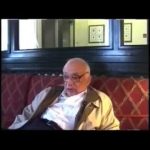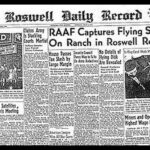LEY LiNES and relevence related to BingLEY / ilkLEY moors ‘ SPECIAL ROCKS”
What Are Ley-Lines?
A ley-line is a straight fault line in the earth’s tectonic plates; this is a scientific fact. What science though refuses to believe is that through these, cracks in the earth’s tectonic plates the magnetic energy released are very powerful indeed. In fact many people have claimed to have felt the energy surge up their body, and some of them claim that they have blacked out as the surge was that powerful.
How Long Have Human Beings Known About Ley Lines?
Our ancestors have known about these lines for many hundreds of thousands years. Every race and culture on the planet has known about these lines yet every one had different names for these lines. Many people here in the UK tended to think that the druids found these lines; this of course is complete and utter nonsense. All we need to do is to look at the ancient cultures of the earth.
Take the native Indians of the United States; they used to call ley lines spirit lines and their Shaman’s used to use the electro-magnetic energy in these lines to help them contact the spirits. They even designed their medicine wheel on the spirit lines, as they knew that these lines followed a straight round line. How did they know about these lines and the energies that they give off? The answer’s simple: the sky Gods told them.
Whilst here in Europe we are lead to believe that the druids called them mystical lines, in Wales they used the same name as eastern countries; they called them dragon lines. We know that Eastern countries called them dragon lines as the sky Gods flew in dragons along these lines (I will draw on the Wales, Eastern connection in the next sub-heading ).
The aboriginal people of Australia called these lines dream lines, once again they claim that knowledge was passed on to them from the sky Gods
Bingley & District
Bingley was once known as the Throstle’s Nest of Old England – though there is no evidence that thrushes were more abundant there than in other parts.
It is more likely to be a reference to its position, nestling in a valley at a bend of the River Aire, five miles north of Bradford, reasonably sheltered from the prevailing blast of the north wind and on the edge of Rombalds Moor, known in popular song as Ilkley Moor.
There is no record of the first inhabitants. Although Druids’ Altar, a sheer rock overlooking the valley, suggests ancient Celtic origins, its name is the product of a romantic tradition rather than real evidence. The town does, however, have a number of springs and wells with Celtic echoes, and a number of carved heads have been discovered around the town, some of them being incorporated in gateposts and garden walls.
At the bottom end of the town, Bailey Hills suggest the site of a castle, and one 17th Century historian claimed to found evidence of such a building.
The name recalls a Saxon owner called Byng. Lea is another word for field. It is a unique name – there isn’t another Bingley anywhere.
The Romans knew it as a spot on their road from Ilkley to Manchester.
But to all intents and purposes, Bingley’s story began in 1213AD with the granting of the manor of Bingley and a market charter by King John to one Maurice de Gant. Like the rest of the North of England, Bingley suffered from the Norman conquest and the Domesday Book logs the whole manor as four leagues long and one broad (the definition of a league varies, but up to three miles is commonly held to be the equivalent), and ‘waste’ – i.e. destroyed.
Through the middle ages and up to the Industrial Revolution, Bingley was more important than its neighbour Bradford.
Leave A Reply
You must be logged in to post a comment.









 Paranormal
Paranormal

